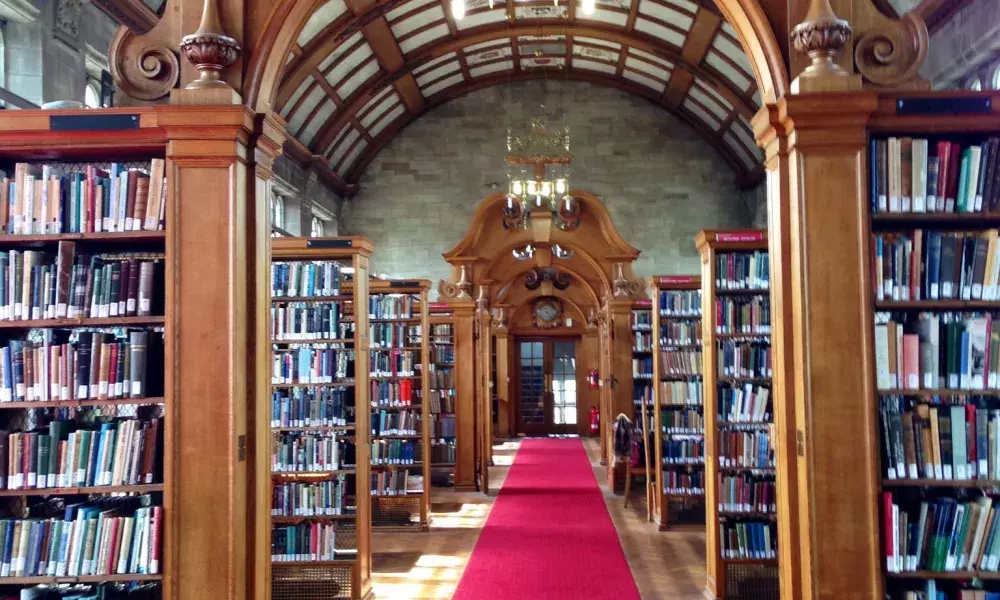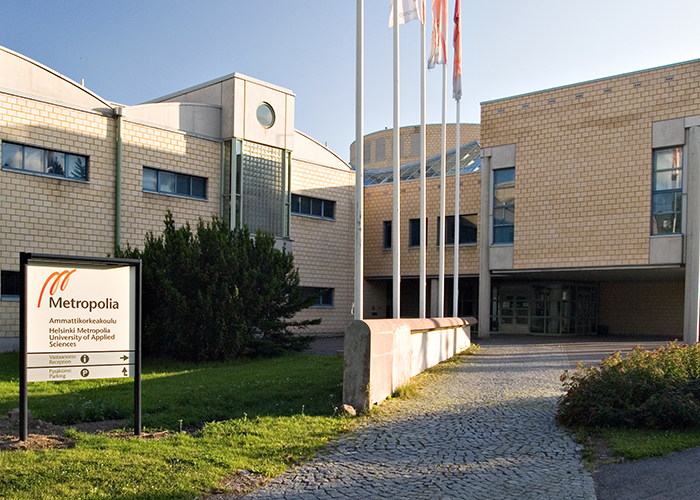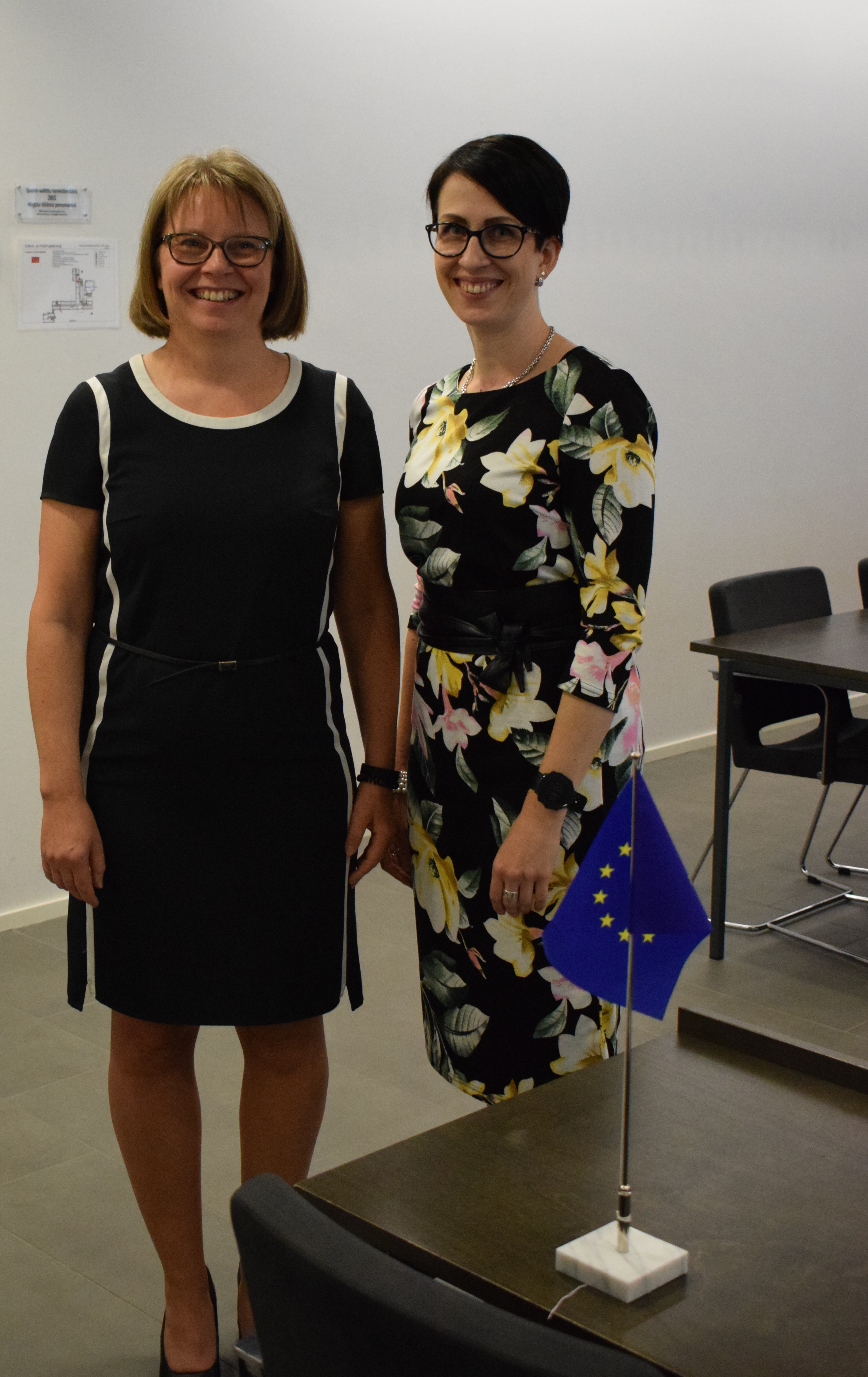How Universities participate in the development of local jobs and skills agendas? Lessons from the Vantaa GSIP Project

Finnish Universities have a long-standing tradition to act both as sound “knowledge brokers” and “innovation process entrepreneurs”. But since the economic crisis of 2008/2009 they have also adopted integrated agendas in promoting the development of human resources (employers, employees and unemployed persons) and fostering a broader entrepreneurial spirit and participation of all actors (including students and citizens) in the local context.
Co-creation with citizens/users is increasingly being cultivated through open innovation methodologies and open innovation spaces. Shared activities and large scale endeavours bring together all parties involved in an entrepreneurial discovery process of experimenting, taking responsible risks and learning in a collaborative way.
It is therefore obvious why the City of Vantaa decided to include two leading Universities of Applied Sciences (the Metropolia University of Applied Sciences and the Laurea University of Applied Sciences) as partners in the UIA funded Growth and Social Investments Pacts (GSIP) Project, one of the main instruments to promote an innovative local jobs and skills agenda by increasing capacity and skills of the workforce, providing favourable preconditions for business development and creation of jobs, based on distinctive local specificities. After almost two years of the GSIP Project implementation, it is now time to discuss the role of these Universities in the fulfillment of its objectives and identify their contribution to the development of a local jobs and skills agenda.
1. A brief snapshot of the GSIP Project
The GSIP Project reflects the City of Vantaa[1] key policy decision:
- to promote growth and competitiveness of local companies;
- to improve level of education of workforce and offer better training possibilities for low-skilled employees, employees with outdated skills and unemployed persons
through the design and implementation of a new, innovative and exceptional service and incentive model (Growth and Social Investments Pacts - GSIPs).
GSIPs are defined as a new instrument for municipalities to reach the maximum impact on public investments, subsidies and services (including training and vocational education) offered to local companies. GSIPs gather information and expertise about jobs and skills from different national, regional and local institutions and support interested local companies to take in a productive way advantage of them. To increase interest, companies’ employees are offered short free training programmes (partly in class), which deal with different topics on future employment demands (the content is based on previous surveys and interviews).
The GSIPs are tailored for Vantaa based companies employing 10-200 people, particularly companies involved in human intensive and routinely operated industrial sectors and IT-companies which have workforce of outdated skills caused by rapid changes in technologies and future business. They focus on three interrelated policy priorities:
- Recruitment of unemployed persons with low skills and education – The GSIP 1 model
- Training of existing staff – The GSIP 2 model
- Use of digitalization processes in the business routine – The GSIP 3 model.
2. The role of Universities in the Finnish Educational System
Education is a strong part of Finnish culture from pre-school years into adulthood. Children in Finland don’t begin formal education until they reach seven years old, but they do still begin early education through the so called “forest schools”[2] and outdoor play. Primary and secondary education aren’t as strict as they are in other nations, but getting a good early education is still viewed as an important step.
Many adults in Finland also continue their lifelong education through evening classes or regular trips to the library (Finland has a higher rate of library usage than any other country). Just as free access to information in libraries is an integral part of Finnish culture, so is developing knowledge through free higher education.
Finland’s education system is regarded as one of the best in the world[3], and other nations are striving to emulate its structure of well-paid teachers, plenty of recess time, and less emphasis on homework and tests. The country’s higher education system also sets an example, especially since Finland is one of the few nations left in the world where its own citizens receive higher education completely free (foreign students still have to pay tuition fees, but they are significantly less than those paid in other countries).
The Finnish Educational System consists of daycare programmes (for babies and toddlers), a one-year "pre-school" (age six), a nine-year compulsory basic school (age seven to age sixteen), post-compulsory secondary general academic and vocational education, higher education and adult education. Schools up to the university level are almost exclusively funded and administered by the municipalities.
A. Compulsory basic school
The compulsory educational system consists of a nine-year comprehensive school from 1st to 9th grade, from the ages of 7 to 16, in which attendance is mandatory. A distinction is often made between 6-year primary schools (called alakoulu or ala-aste) and comprehensive 3-year middle schools (called yläkoulu or yläaste).
B. Upper secondary education
Upper secondary education begins at 15 or 16, lasts three to four years and is not compulsory. Upper secondary students may choose whether to undergo occupational training to develop vocational competence and/or to prepare them for a polytechnic institute or to enter an academic upper school focusing on preparation for university studies and post-graduate professional degrees in fields such as law, medicine, science, education, and the humanities. Admissions to academic upper schools are based on the high school final grade point average (GPA), and in some cases academic tests and interviews.
The system, however, is not rigid and vocational school graduates may formally qualify for a University of Applied Sciences or, in some cases, University education; conversely, academic secondary school graduates may enroll in vocational education programmes. It is also possible to attend both vocational and academic secondary schools at the same time.
Upon graduation, vocational school graduates receive a vocational school certificate. Academic upper secondary school graduates receive both secondary school certification and undergo a nationally graded matriculation examination. Students enrolled in special programmes may receive a vocational school certificate and take the matriculation examination (kaksoistutkinto) or all of the three certifications (kolmoistutkinto). Approximately 83% of the upper academic school students, or 42% of the age group, complete the matriculation examination.
C. Higher education
There are two sectors in the higher (tertiary) education[4]: the traditional Universities (yliopisto, universitet) and the Universities of Applied Sciences - UASs (ammattikorkeakoulu, yrkeshögskola, or AMK/YH for short)[5]. Admissions are based on the GPA, the high school final exam (the abitur), and the university entrance examinations, which focus on a small number of long and complicated questions that are supposed to test more than memorization and quick mechanical problem solving.
All Finnish Universities were owned by the state until 2010, after which they have been separated from the state into foundations or corporations under public law. They focus on research, and they provide theoretical education. In many programmes graduating with a Master's degree is expected, with no separate admissions process between Bachelor and Master's degrees.
The UASs, on the other hand, are governed by municipalities, or, in special cases, by private entities. They focus more on responding to the needs of the labour market and they often engage in industry development projects. The nature of research is more practical and theories are applied to advanced problem solving.
Both Finnish Universities and UASs have a long-standing tradition to act both as sound “knowledge brokers” and “innovation process entrepreneurs”[6]. But since the economic crisis of 2008/2009 they have also adopted integrated agendas in promoting the development of human resources (employers, employees and unemployed persons) and fostering a broader entrepreneurial spirit and participation of all actors (including students and citizens) in the local context.
A Bachelor's degree from Universities takes about three - four years. Depending on the programme, this may be the point of graduation, but it is usually only an intermediate step towards the master's degree. A Bachelor's degree from a UAS takes about 3,5 - 4,5 years.

Picture 1: Finnish university students celebrate May Day while wearing their high school graduation caps
Graduates from Universities and UASs are able to continue their studies by applying to Master's degree programmes in Universities or UASs. After Bachelor's degree graduates have completed three years' work experience in their field, they are qualified to apply for Master's degree programmes in UASs, which are work- and research-oriented. Lower University degree graduates are also qualified to apply, but with additional studies. The Master's degree programme in UASs takes two years and can be undertaken in conjunction with regular work.
After the Master's degree, there are two further post-graduate degrees: an intermediate postgraduate degree, called Licentiate, and the doctoral (PhD) degree, both available only in Universities. A Licenciate programme has the same amount of theoretical education as a Doctor, but its dissertation work has fewer requirements. On the other hand, the requirements for a doctoral dissertation are a little bit higher than in other EU countries.
D. Adult education
Completing secondary school on a vocational programme with full classes on a three-year curriculum provides a formal qualification for further studies. However, it may prove necessary to obtain post-secondary education before being admitted to a University, as the entrance examinations require a relatively high level of knowledge. Post-secondary education is provided by municipal schools or independent 'adult education centres', which can provide either vocational education or teaching at comprehensive or upper secondary school levels. It is possible to obtain the matriculation diploma, or to better the comprehensive school grades, in these programmes.
At the Universities level, the so called "Open University" (Avoin yliopisto) programme enables people without student status to enroll in individual university courses[7]. There are no requirements, but there is a modest tuition fee. Universities of Applied Sciences have also their own similar programme (Avoin ammattikorkeakoulu).
A third branch of adult education is formed by the so-called vapaa sivistystyö, the "Free Education" sector. This is formed by the partially state-funded, independent educational institutes offering diverse courses varying in length and academic level. The purpose of the "Free Education" sector is not to provide professional or degree-oriented education but to support the multi-faceted development of personality, the ability to act in the community and to pursue the fulfilment of democracy, equality and diversity in the society.
The "Free Education" services are offered by:
- 206 Citizens' or Workers' Institutes (kansalaisopisto or työväenopisto)
- 88 People's Institutes (kansanopisto)
- 14 Sports' training centres (liikunnan koulutuskeskus)
- 20 Summer universities (kesäyliopisto)
- 11 Study Centres (opintokeskus).
3. The participation of Universities in the GSIP Project
The GSIP Project Partnership includes the City of Vantaa (acting as the Main Urban Authority) and representatives of the following sectors:
- the academia (the Metropolia University of Applied Sciences and the Laurea University of Applied Sciences);
- the social partners (the Labour Institute for Economic Research, the Research Institute of the Finnish Economy “ETLA” and the Helsinki Region Chamber of Commerce);
- the market (ISS Services Ltd, Infocare Ltd, Solteq Plc., Finnair Cargo Ltd);
- the local government (Vantti Ltd).
A. The Metropolia University of Applied Sciences[8] is the largest UAS in Finland, located in the Helsinki metropolitan area. It has four fields of study: culture, business, health care & social services, and technology.
Metropolia in brief
- 16,200 students / 930 employees
- 2,794 Bachelor’s and 477 Master’s graduates in 2019
- 69 degree programmes - 12 of them in English
- 43 Bachelor's degree programmes - 6 of them in English
- 26 Master's degree programmes - 6 of them in English
- Most popular UAS in Finland in terms of applicants: 3.1 first-choice applicants per study place in 2019
- Every eighth UAS student in Finland graduates from Metropolia
- 900 foreign degree students, nearly 90 nationalities
- Budget in 2019 EUR 97 million
- Publicly funded and owned by Cities of Helsinki (42%), Espoo (27%), Vantaa (26%), Kirkkonummi (4%) and Kauniainen (1%)
The University has concentrated its operations on four campuses that create an open and attractive learning environment and network, which boost the area to develop and succeed:
(a) The Arabia Culture Campus (located in Helsinki) is a vibrant urban arena for ideas and stories. It attracts creative minds from diverse cultural fields, continuing the district’s long tradition of arts and design while boldly moving ahead in new directions.
(b) The Karamalmi Campus is located in Espoo (22 minutes drive from the Helsinki-Vantaa airport) and is focused on the development of smart solutions.
(c) The Myllypuro Campus (located in Helsinki) is focused on technology and life sciences.
(d) The Myyrmäki Campus (located in Vantaa) is where Industrial Technology meets International Business; it is a multicultural hub where people work in close collaboration with companies, at the forefront of sustainable development.

Picture 2: The Myyrmäki Campus in Vantaa
B. The Laurea University of Applied Sciences[9] (formerly Vantaa UAS and Espoo-Vantaa UAS) began operating in Vantaa in 1992 as one of the first UASs to be granted an experimental license in Finland. It operates in the Uusimaa Region and has three fields of study: Business Management, Social Services & Health Care and Hospitality Management.
Laurea in brief
- 7,400 students / 500 employees
- 18 degree programmes, of which six are taught in English
- The most appealing University of Applied Sciences in the joint application process of spring 2019 in Finland: 7.68 primary applicants per starting place
- 1,500 graduates per year from Bachelor’s programmes
- 180 graduates per year from Master’s programmes
- Annual turnover: EUR 52 million
- External RDI funding (2018) EUR 3.5 million
- Funded and owned by the City of Espoo (32,4%), the City of Vantaa (32,4%), the Keski-Uudenmaan Education Consortium (13,42%), the City of Hyvinkään (4,32%), the Länsi-Uudenmaan Education Consortium (4,32%), the City of Porvoon (3,78%), the City of Kauniaisten (3,6%), the Municipality of Kirkkonummi (3,6%), and the Finnish Association of people with physical disabilities (2,16%)
The University has concentrated its operations on six campuses: Hyvinkää, Leppävaara, Lohja, Otaniemi, Porvoo and Tikkurila (located in Vantaa).

Picture 3: The Tikkurila Campus in Vantaa
Both Universities have introduced and develop strong networking agendas with regional partners, which include companies, public organizations and third-sector actors as well as labour and employer associations. In this respect, Laurea has concluded a cooperation agreement with 20 municipalities in the Uusimaa Region and has promoted contacts with most of the Region’s key education organizations and a number of other organizations. Metropolia has established the innovation hub “Functional City for People”[10], whose aim is to bring together regional, national and international stakeholders from the academia, industry, public sector and civil society to learn together and co-create innovations to make life better for all, bring new solutions to the challenges of urbanization and to grasp new arising opportunities.
4. The role of Universities in the GSIP Project
The role of the Metropolia UAS and the Laurea UAS in the design and implementation of the GSIP Project was elaborated through an online discussion during July - August 2020 with Marilla Kortesalmi, Project Manager for the Laurea UAS and Elina Taponen, Project Manager for the Metropolia UAS. Both colleagues confirmed the strong cooperation processes between the City of Vantaa and the two UASs[11], and highlighted key issues about the exploitation of academic research and training for the development of sound local jobs and skills agendas[12].

Picture 4: From left to right: Marilla Kortesalmi - Laurea UAS and Elina Taponen, Metropolia UAS
DISCUSSION POINT No. 1: Why has your University decided to join as a Partner of the Vantaa GSIP Project?
UASs RESPONSE:
“Universities of Applied Sciences in Finland have a strong role in areal vitality. Both Laurea UAS and Metropolia UAS have established deep cooperation and relationship with the City of Vantaa. Various different projects and living labs has taken place here. To mention few, open kindergarten in Tikkurila is organized by the City of Vantaa and operated with students of Laurea UAS.
In Myyrmäki, Urban Farm Lab is an ecosystem for innovative food stakeholders, City of Vantaa and Metropolia UAS (https://www.metropolia.fi/en/rdi/innovation-services/urban-farm-lab). Metropolitan municipalities are the owners of both UASs. It is our shared interest and core focus of activities to create innovative, vital and socially inclusive region.
Laurea and Metropolia UASs have also a wide European and global R&D network that has been successfully integrated also to various projects with the City of Vantaa”.
DISCUSSION POINT No. 2: Which tasks has your University agreed to undertake within the Vantaa GSIP Project[13]?
UAS’s RESPONSE:
“Laurea and Metrpolia UASs provide business and workforce analysis, design GSIP-models and develop and implement training programs for both supervisors and employees for partner companies in WP4 together with other dedicated partners. In WP5 they execute training programs to pilot companies together with other dedicated partners. In WP6 we are involved as experts. Both participate in project coordination in WP2 and communication in WP3”.
DISCUSSION POINT No. 3: What activities in relation to Working Packages has your University completed during the period November 2018 – June 2020?
UASs RESPONSE:
“We have completed Growth Deal (GSIP) 1, that is A4.1 and A5.1. We also completed A4.2, developing and testing second growth deal with partner companies. The models will be piloted to SMEs in fall 2020”.
DISCUSSION POINT No. 4: What is your overall perception from the Project implementation so far? Have you identified any best practice (i.e. co-creation, etc.)?
UASs RESPONSE:
“Co-creation is a very practical approach to an innovative multi stakeholder project[14] like GSIP is. However, the shared interests and objects for cooperation can be achieved only if the foundation of cooperation is solid. That is, in the beginning of the project, the criteria, practices and project goal should be processed thoroughly. It is also very important that shared understanding of the targets as well as sense making of selected strategies are co-created and repeatedly communicated.
In co-creative projects strong specialization of individual project target can lead to unique point of view instead of shared sense making. Top-down management conflicts co-creation fundaments, and co-creation orchestration is key to success”.
DISCUSSION POINT No. 5: Have you identified, on the other hand, any risk / challenge?
UASs RESPONSE:
“Internal communication is very crucial in project’s daily operations. The project management should focus very strongly to create the communication practices in the beginning of the project. Later on they are harder to establish. If no, continuous misunderstandings and misinterpretations take place.
Key operators can change during the project. To avoid possible harm: all information should be shared and clearly communicated (our Teams platform[15]). Also, all key operators (that is all project managers) should share the responsibility to other team members.
DISCUSSION POINT No. 6: How have you addressed key challenges so far?
UASs RESPONSE:
“In June 2020, the Project was without project manager. However, our processes must continue and project specialists had to continue their work. In this situation, UASs project managers stepped out and together with the City created management team and practices that kept the project going on. From this point of view, project multi stakeholder structure was crucial to keep the project alive and processes focused to project targets”.
DISCUSSION POINT No. 7: Do you think in principle that local policy leaders in Europe should involve Universities in the formulation of local jobs and skills agendas[16]?
UASs RESPONSE:
“Strong cooperation between municipalities and different stakeholders (including Universities) is very important in regional development projects. UASs often have tools, practices and network that enable this cooperation.
That should not be considered only between different organizations. Big municipalities in Finland, like Vantaa (Helsinki and Espoo as well) tend to silo and natural communication and cooperation can be difficult. UASs often have a role of mediator and projects can be considered as a practical tool and platform for this. GSIP being an excellent example of this.
When talking about the cooperation with companies: Vantaa has a great infrastructure to participate companies to the city’s strategic work, needs and hopes are interacted mutually. However, UASs educate the future workforce. Continuous triangular cooperation is, therefore, a key to regional vitality. Projects serve as a platform for this interaction, GSIP being an excellent example of this”.
Notes
[1] It should be noted here that the City of Vantaa forms part of the metropolitan area of the Helsinki capital and is one of the 26 municipalities within the Helsinki-Uusimaa Region, the most “innovative” Region in the EU (European Commission, Regional Innovation Scoreboard 2018, 2019, p. 16).
[2] These are classes for kindergarten and pre-school age children where they can spend up to 95% of the school day outdoors in the wilderness exploring, playing, and learning about the world around them.
[3] Finland achieves both excellence and equity in compulsory education, ranking among the top countries in PISA (https://www.oecd.org › pisa). Finland has also been successful in developing the skills of its adults, with average scores within the context of the Programme for the International Assessment of Adult Competencies in literacy and numeracy significantly above average compared to other OECD countries (https://www.oecd.org › Skills-Strategy-Finland).
[4] The key differences between Universities and UASs are:
- Study programmes at UASs often include practical training or work placements;
- UASs focus on regional development (many campuses are located in smaller cities or regions outside of metropolitan hubs);
- Admission requirements are usually a bit less demanding, at least for undergraduate degree programmes (admission to Master’s programmes at a UAS commonly requires at least three years of relevant work experience).
[5] There are 17 Universities and 27 UASs in the country.
[6] See for example the role of the Aalto University in the development of the Espoo innovation ecosystem, as discussed by G. Rissola, F. Hervas, M. Slavcheva and K. Jonkers, Place-Based Innovation Ecosystems: Espoo Innovation Garden and Aalto University (Finland), European Commission, 2017, available at: 10.2760/949545 (online).
[7] While "Open University" students cannot pursue studies towards a degree, they may, after passing a sufficient number of separately determined courses with a sufficiently high grade point average, be eligible for transfer into an undergraduate degree programme.
[8] https://metropolia.fi/en.
[9] https://www.laurea.fi/en.
[10] Functional City for People is one of the Metropolia UAS five innovation hubs (https://www.metropolia.fi/en/rdi/innovation-hub).
[11] It should be noted here that in line with the current national legal framework Finnish UAS’s are governed by municipalities.
[12] See for an overall global discussion S. Yusuf and K. Nabeshima (eds.), How Universities Promote Economic Growth, The International Bank for Reconstruction and Development / The World Bank, 2007, available at: elibrary.worldbank.org › doi › pdf.
[13] An overview of the GSIP Project is available in the UIA Expert Journal No.1: https://www.uia-initiative.eu/en/news/gsip-expert-journal-1-get-know-project-and-what-happened-first-6-months.
[14] T. Hirvikoski, L. Erkkilä, M. Fred, A. Helariutta, I. Kurkela, P. Pöyry-Lassila, K. Saastamoinen, A. Salmi and A. Äyväri (eds.), Co-Creating and Orchestrating Multistakeholder Innovation, Laurea UAS Publications No. 143, 2020, available at: https://www.theseus.fi/bitstream/handle/10024/344909/Laurea%20Julkaisut%20143.pdf?sequence=5#page=253.
[15] The GSIP partners have designed and use a web Teams platform for internal communication and dissemination.
[16] A systemic analysis of the contribution of the GSIP Project to the development of local jobs and skills agendas is available in the UIA Expert web-article No. 2 “How may policy discourse influence local jobs and skills agendas? The case of the Vantaa GSIP Project”: https://www.uia-initiative.eu/en/news/how-may-policy-discourse-influence-local-jobs-and-skills-agendas-case-vantaa-gsip-project.
About this resource
The Urban Innovative Actions (UIA) is a European Union initiative that provided funding to urban areas across Europe to test new and unproven solutions to urban challenges. The initiative had a total ERDF budget of €372 million for 2014-2020.
Similar content




